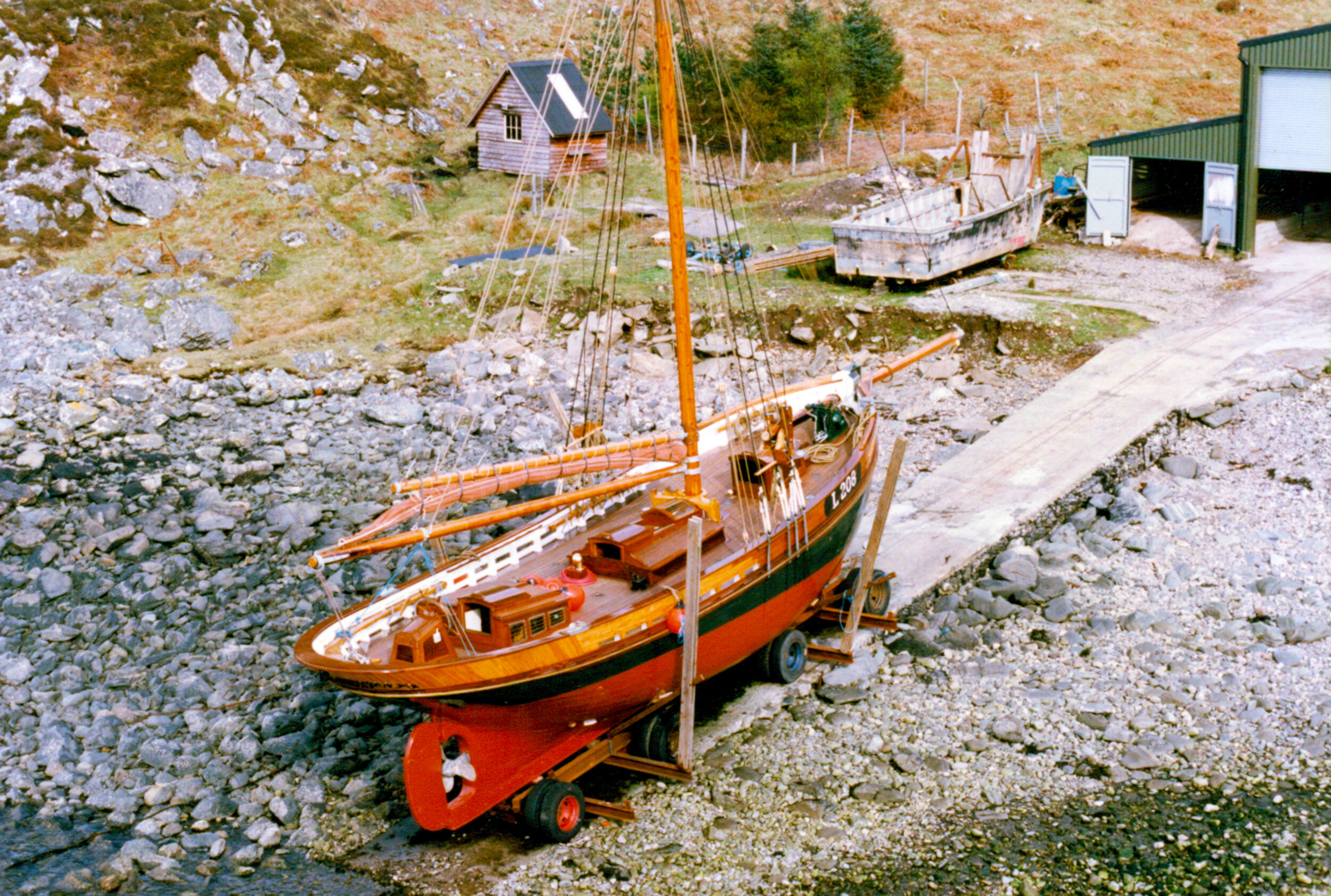Have you ever wondered what goes on beneath that beautiful pea green paint?
It’s a pretty interesting story actually.
The Eda Frandsen that we now know and love has seen several incarnations over the years and sifting through the archives since we took over ownership in September has uncovered some gems!
Having been constructed in 1938 at a shipyard in Grenå, for a shell- fisherman from Lemvig, “Legoda” as she was originally known, worked as a Hajkotter fishing trawler until 1988. Being renamed in 1970 as “Eda Frandsen” after the wife of her owner of the time, Aye Anderson.
She had worked hard for all of her life, earning a good living for the people who owned her, this success is perhaps what enabled her to dodge the fate that faced many of her kind as they were decommissioned and cut up as more modern steel vessels took over.
Lying abandoned and stripped of her fishing gear, Eda’s beautiful lines attracted the attention of Alan and Jamie Robinson who had travelled from their home in Scotland to Denmark in search of a sturdy vessel to restore in order to take people sailing around their home waters off the West Coast of Scotland.
Having arrived to find the boat they had been hoping to buy had already been chopped into firewood, they were directed to “L208” as she was next in line. Despite her condition it must have been love at first sight as the Robinson family saw nothing for it but to attach an old tractor cab to her empty shell and motor her back across the North Sea, in a gale. With only basic navigation equipment and barely a dry place to rest, they arrived back to their home on the remote peninsula of Knoydart having survived a terrific December snowstorm in which many fishing trawlers we lost.
This wild adventure helped to cast in stone their trust in the vessel's capabilities and it was this trust that gave them the drive and determination to overcome the challenges they were yet to face.
Having been restored over 3 years in the small community of Doune, where all supplies had to be brought in by sea and everything that could, was to be built from scratch. One fateful night as she was very nearly ready to be launched, a fire broke out leaving Eda burnt nearly to the ground.
After the fire in Doune where Eda had lain close to completion ready to be launched.
Over a further two years, beginning in late 1994, and with the help of around 50 volunteers from all around the world, Eda was resurrected to finally become the strong and sturdy sailing ship we see today.
Nearly all of the planking, 18 runs had to be replaced on the port side following the fire, with half of the starboard side also needing to be replaced. They used 2 .5 “ Oak for the garboards and 2’ Larch for the rest of the planks, some of which were 35 to 40 feet long.
Eda’s Port side showing the new planking and flare of her counter.
Eda’s Starboard side was partially replanked in Oak and Larch, before being faired, caulked and puttied.
As the months rode on, she was caulked with Oakum and her seams were payed with red lead putty. Inside the hull new deck beams, carlins, hanging knees and covering boards were fitted.
Around the stern everything was either replaced or doubled up, including the horn timbers either side of the stern post, the eight cant frames that radiate out to form the counter stern and adding to the existing bilge stringers. The last of which had to be threaded in against the existing frames from forward whilst steaming hot. No mean feat!
The Robinsons knew that they couldn’t undertake the rebuild alone. So they posted adverts in University careers offices for volunteers to come and help in exchange for food and board. They had over 50 people from all over the world come and help over the next two years.
By September 1995, Eda Frandsen was well on her way to being a fully fledged sailing boat once again. She was relaunched the following April, with a rig made from a Douglas Fir tree which had been floated out to Doune and had luckily escaped the fire in the shed. Her rigging, the traditional parcel and serving onto dead eyes and lanyards led to the outboard chain plates, and her new silhouette cast the shadow of a rather spectacular little ship. The rest as they say is history, Eda has gone on to merely complete the task at hand, and at the last check her gps had logged around 45,000 sea miles. Though if you were to add on her fishing days I am sure it would be considerably more.
Following the rebuild and ready for the sea once more.
Much of the information for this piece has come from Peter Rolt’s 1998 article in Wooden Boat Magazine “The Survival of Eda Frandsen”.
With photos from the Robinson Family archive.





